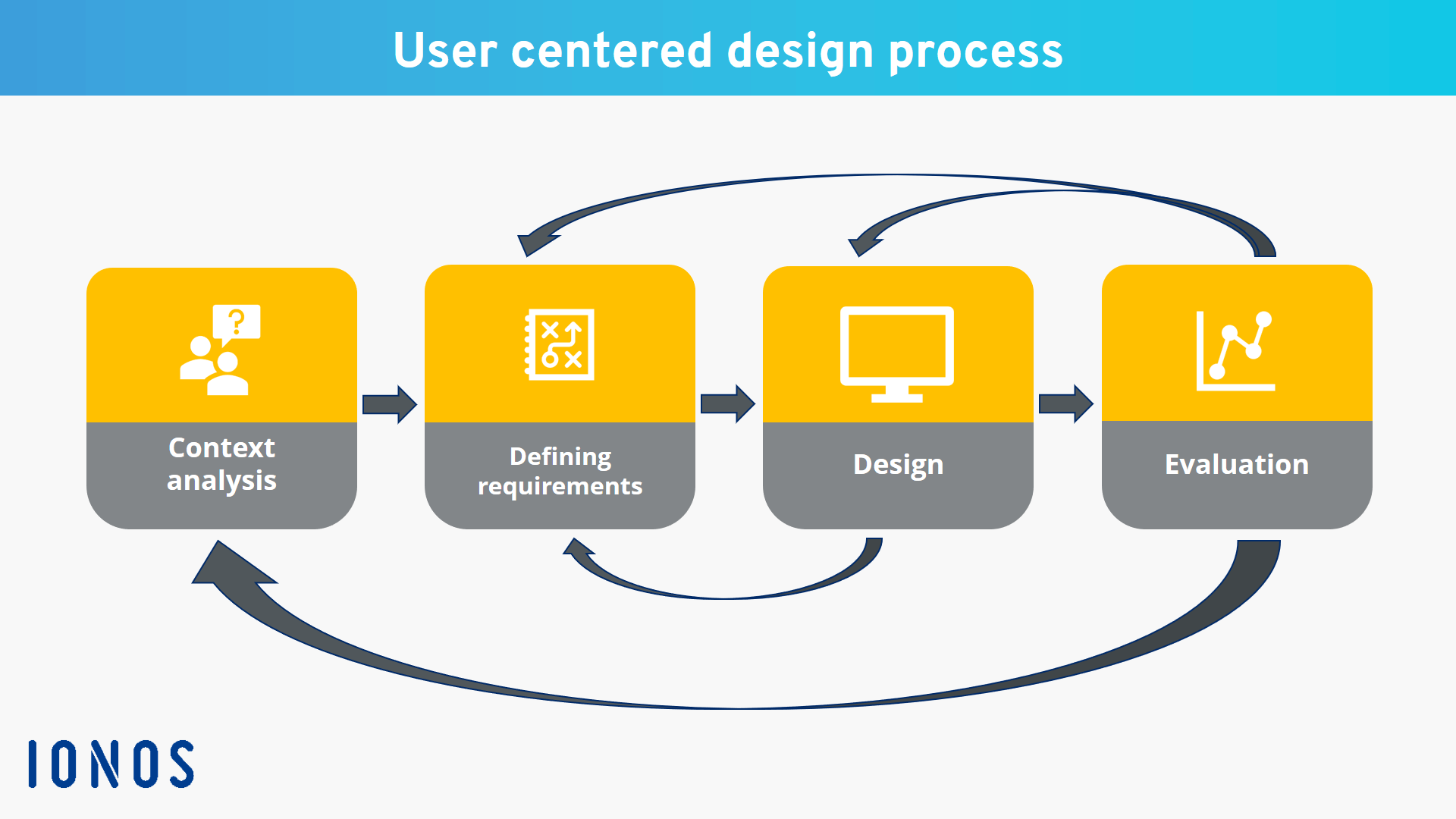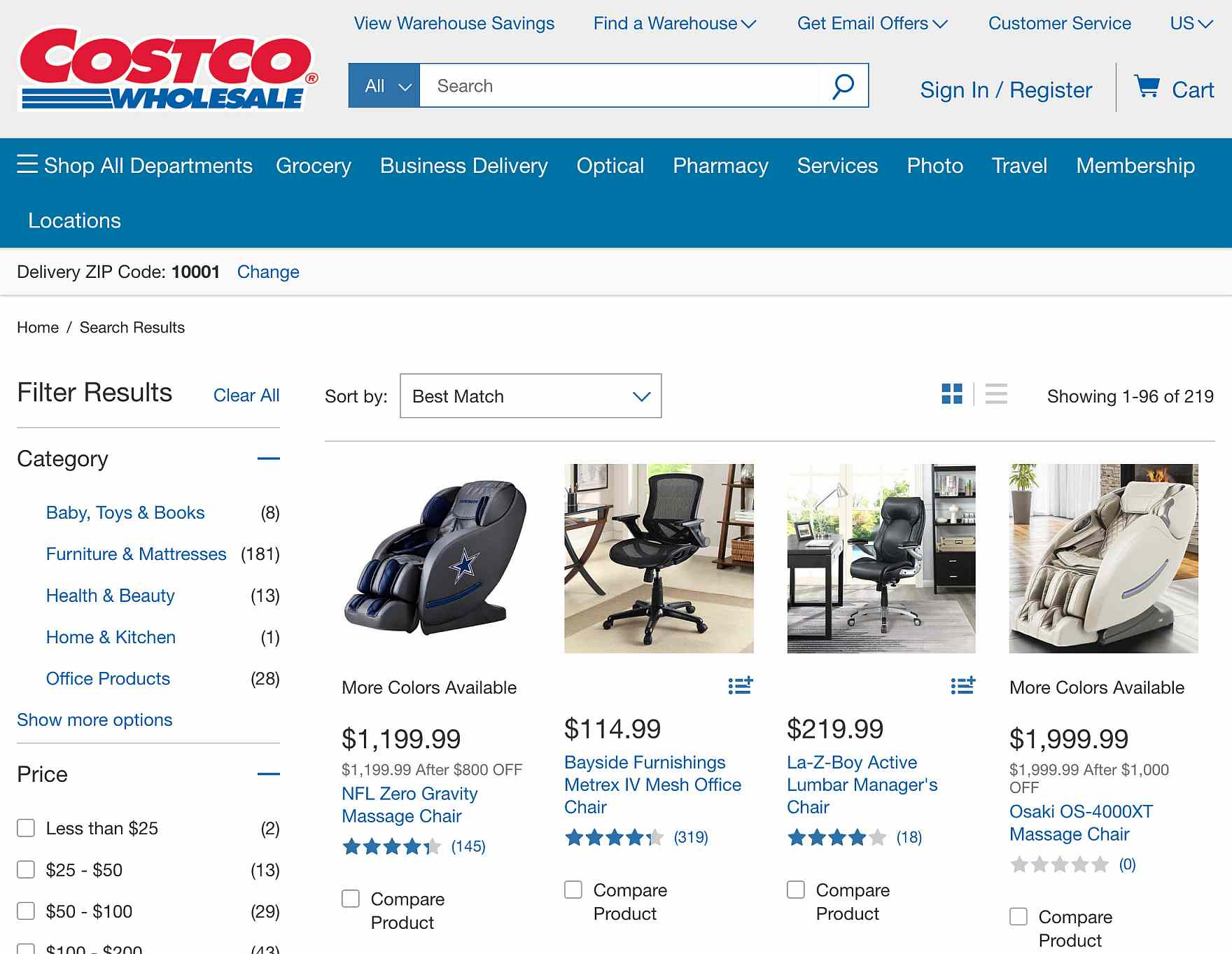Human-centered innovation is now at the center of many companies’ design and development decisions. Instead of pushing products to market as fast as possible, these companies are switching to a model of user-centered design.
By focusing on the user experience, design and development teams create high-performing digital products that specifically match users’ needs.
In this post, we will explain what user-centered design is, its primary principles, and what a user-centered design process looks like.
Then, we’ll show you ten examples from desktop and mobile websites that highlight user-centered design for e-commerce.
User-centered design (UCD) is an iterative design process where the focus is on users and their needs at each stage of the design process. In UCD, designers involve users throughout the design process via various research and design techniques to create highly usable and accessible products for them.
UCD is an Iterative Process
In user-centered design, designers use a combination of investigative methods like surveys and interviews as well as generative techniques like brainstorming to develop an understanding of user needs
The term was first used in the 1970s when cognitive science and user experience expert Don Norman adopted it in his extensive work on improving user experiences. The approach gained prominence through works like User Centered System Design: New Perspectives on Human-Computer Interaction (which Norman co-authored with Stephen W. Draper) and Norman’s own book The Design of Everyday Things.
4 Phases in User-Centered Design
Generally, each iteration of the UCD process involves four distinct phases:
Understand Users and Their Context
First, as part of a design team, we try to understand the context in which users may interact with a system.
Identify and Specify User Requirements
Next, we identify and specify the users’ needs and requirements.
Develop Design Solutions
A design phase follows where the team develops solutions to address the identified user needs and requirements.
Evaluate Against Requirements
The team then proceeds to an evaluation phase where they assess the outcomes against the users’ context and requirements to see how well the design is performing – how closely it matches the users’ context and satisfies their needs.
From here, the team reiterates these four phases, continuing until the evaluation results are satisfactory.
User-centered design is thus an iterative process focused on understanding users and their context at all stages of design and development.
UCD Considers the Complete User Experience
In UCD, designers base their projects on an explicit understanding of users, their tasks and environments. The aim is to capture and address the entire user experience. Therefore, design teams should include professionals from multiple disciplines like ethnography, psychology, engineering, and domain experts along with stakeholders and end users themselves.
Experts may conduct evaluations of the designs produced, using established design guidelines and criteria. However, it is crucial to involve actual users for assessment to cover the full user experience. Long-term monitoring of system use is also required.
Investing in UCD Pays Off
Bringing real users into every stage of design requires effort and resources. But it provides a powerful method for finding out what works, what doesn’t, and why. Users act as an early warning system, helping to course correct and fine-tune the design. They expose overlooked usability and accessibility issues. This demonstrates the significant benefits of a user-centered approach.
According to Professor David Benyon, UCD pays off in four key ways:
-
Close user involvement means products are more likely to meet user expectations and needs, boosting sales and reducing customer service costs.
-
Tailoring systems for specific users, contexts and tasks reduces the risk of human errors. UCD leads to safer products.
-
Direct contact with users builds designer empathy, essential for ethical designs that respect privacy and quality of life.
-
Focusing on diverse users helps recognize varying cultures and values – a step towards sustainable businesses.
Key Components of UCD
While UCD is an iterative process, some key components help drive user focus:
User Research
Understanding user behaviors, needs, motivations, limitations, and context is core to UCD. User research like interviews, observation, surveys, field studies, and diary studies help uncover user insights.
Personas
Personas represent hypothetical archetypes of real users. They help guide design decisions based on user goals and behaviors. Effective personas are based on rigorous research.
Scenarios
Scenarios describe realistic user interactions with a system to meet goals. They help envision the user experience during design.
Prototyping
Prototypes are early, inexpensive, and simplified representations of the final product that enable designers to gather user feedback for improvement.
Usability Testing
Usability testing with real users ensures designs are usable and meet user expectations. Both formative testing early on and summative testing later are crucial.
UCD Best Practices
Some best practices for effective user-centered design include:
- Involve users early and continually
- Immerse designers in the user environment
- Measure design performance against user requirements
- Iterate based on user feedback
- Communicate user goals across teams
- Advocate simplicity in design
UCD Benefits
Some benefits of adopting user-centered design:
- Improved usability and user experience
- Useful and valuable products for users
- Reduced development time and costs
- Increased user adoption and satisfaction
- Reduced support and training costs
- Less frustration for users
- Increased accessibility

Free Report: 7 Quick UX Fixes for Your E-Commerce Site
Get a curated selection of e-commerce best practices from our 130,000+ hours of research.Enter your email address
Instantly get the report plus Baymard’s UX research insights by email
Looking for examples of user-centric design for e-commerce sites?
Although no site has a perfect score in our testing, we have included 10 e-commerce sites evaluated during our benchmarking research of both good and bad UCD (five desktop sites and five mobile sites).
Take a look to learn why these specific elements and features can be recognized as examples of great user-centered design – or designs that create issues for users.
Costco Not Persisting a User Search Query (Desktop)

On most sites, the user’s search query is retained in the search box when they reach the search results page. On sites where the search term is cleared and users have to retype their query, it takes longer to iterate the search process, creating friction in the shopping experience and causing some users to abandon using the search field on the site.
An important goal of user-centered design is to keep the user on the page. By having a persisting search query, the user does not need to reenter their information every time they perform a search.
What is user-centred design (UCD)?
What is User Centered Design (UCD)?
In UCD, design teams involve users throughout the design process via a variety of research and design techniques, to create highly usable and accessible products for them.
What are some examples of user-centered design?
One great example of user-centered design comes from the design firm IDEO Chicago, in partnership with Moneythink, when they developed a personal finance app for young people. When first developing the app, they had a unique target user: low-income students who want to get a better handle on their personal finances.
How do you ensure a design is user centered?
Here are the principles that help in ensuring a design is user-centered: Design is based upon an explicit understanding of users, tasks and environments. Users are involved throughout design and development. Design is driven and refined by user-centered evaluation. Process is iterative.
Why is user-centered design important?
By employing UCD principles, organizations have a better chance at living up to their customers’ expectations and putting out lucrative, user-friendly products. Here, we’ll take you through the basics of user-centered design: what it is, how it works, and the benefits of adopting user-centered design practices.